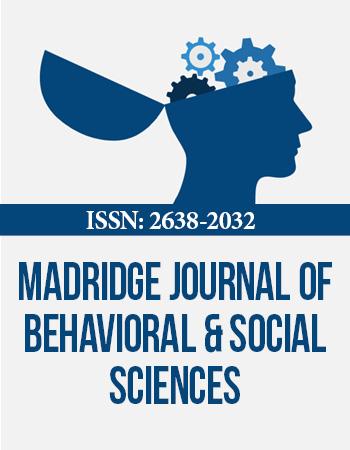Editorial
Keeping in Mind ever-changing Demographic Measurement in Research
Professor of Sociology, The College of Saint Rose, Albany, New York, USA
*Corresponding author: Stephanie A Bennett-Knapp, Professor of Sociology, The College of Saint Rose, Albany, New York, USA, E-mail: bennetts@mail.strose.edu
Received: April 18, 2019 Accepted: May 17, 2019 Published: May 27, 2019
Citation: Bennett-Knapp SA. Keeping in Mind ever-changing Demographic Measurement in Research. Madridge J Behav Soc Sci. 2019; 3(1): 53-54. doi: 10.18689/mjbss-1000109
Copyright: © 2019 The Author(s). This work is licensed under a Creative Commons Attribution 4.0 International License, which permits unrestricted use, distribution, and reproduction in any medium, provided the original work is properly cited.
As a sociology professor who teaches course in methodology, social inequality, and social determinants of health, I am constantly explaining to students how researchers measure some of the most basic human demographic characteristics. The question often raised by students is, how do the traditional demographics variables used in articles and are measured with nominal or dichotomous variables cover the real-world social characteristics of real diverse people. As researchers, we too should be asking ourselves about this.
When pondering a hypothesis, researchers spend a lot of time working with processes involving operationalizing, reliability, and validity of key variables. Earl Babbie [1] talks about this process as the taking of social concepts and breaking them into operationalized variables with attributes. However, when it comes to demographic characteristics, many just use common questions. This always raises the question of how can breaking people apart come to measure the complete extent and changing nature of human diversity that is studied under the umbrella of intersectionality.
The General Social Survey (GSS) provides several common demographic variables in widely used formats. Age, Education, or Income can easily be divided within a category (ten-year age ranges, highest degree earned, or thousand-dollar ranges) and still maintain the ordinal relevance of the attribute. There is little controversy that those variables do not fully capture the social attribute.
Some social concepts need a bit more choice of measurement to fully cover all the attributes. When measuring religious faith, you may choose nominal (Christian, Muslim, Jewish, Buddhist, Hindi, none, other). However, one can also describe more than just a belief system if a ratio variable of religiosity is chosen. Such a ratio variable measures the number of services regularly attended during a set time or an interval ratio that measure how strongly one associates with their religious believes. Another example involves Political Party affiliation. This variable can be categorized nominally by political party identification or it can be measured as a ratio of strength of political party affiliation. In a similar way, employment variables can be nominal. Variables can measure whether employed (employed, unemployed, home maker, student), level of employment (full or part time), or occupational industry code. This variety of variable types allows for a wide range of ways to capture the specific social attribute of interest depending on the research topic.
Today here are variables that have had measurement of their social concepts and attributes brought into question with societal changes, increasing their complexity. Marital status can be measured categorically (single, married, divorced, widowed) and can be paired with cohabitation status (married, not married cohabiting partner, not married no cohabiting partner) to get a better understanding of relationship status. Residence variables become complex when the GSS only have region of county or size of place as their variables. With all the controversy over rural/urban differences in society, it can be hard to get an understanding of this without an additional categorical variable for metropolitan status or even an urban/rural dichotomous variable. Even more helpful would be a companion variable that captures the attributes that make residence different (i.e. density, access to technology, access to employment, access to education, etc).
Then there are ways of measuring social concepts or attributes that are ever changing. A primary example of this point is ethnicity and race. As Hispanic is the largest ethnic minority, many surveys provide a dichotomous variable choice (Hispanic origin or not) along with a categorical breakdown of different ethnicities within the Hispanic category. However, race does not have more than one way to measure. With the increased presence of multiracial children, is having only one categorical variable based upon the U. S. Census department definition appropriate when the meaning of race may be more complex for individuals and as a social attribute?
Finally, one of the more controversial measurements is often gender. Since 1972, the GSS variable has been a dichotomous variable (male or female), meaning the presence of one and the absence of the other. Today the expression of gender can be argued to be also continuum, so the full expression of the social concept and attributes cannot be solved by merely adding an “other” category [2]. The changing of how one expresses their gender can be seen when one is asked to identify their pronouns when registering for a conference so they may be included on identification badges.
With this look through the GSS [3], it is clear that basics demographics should not be taken for granted and should be reconsidered in regard to how they are measured. Researchers should spend the time not only considering the operationalization of hypothesis to capture the validity and reliability of their key variables, but also on the other demographic variables that researchers use for comparison between groups of people. Taking for granted how we operationalize or measure demographics, may draw questions about finding when the full expression of social concepts and/or their attributes are not fully measured as well.
References
- Babbie ER. The basics of social research. Cengage learning. 2017.
- Herman JL. Best practices for asking questions to identify transgender and other gender minority respondents on population-based surveys. Los Angeles: Gender Identity in U.S. Surveillance (GenIUSS) Group. 2014.
- Smith TW, Hout M, Marsden PV. General Social Survey, 1972-2014 [Cumulative File]. Ann Arbor, MI: Inter-university Consortium for Political and Social Research [distributor], 2016-03-14. doi: 10.3886/ICPSR36319.v2


